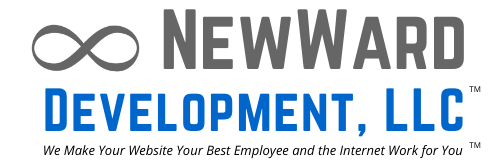Originally Published in Success Magazine, Sept 2007
by Melissa Ward, Managing Partner NewWard Development, LLC
Prior to a pixel being drawn on the screen, before laying out the navigation of your Web site, before discussion of colors or layout or graphics takes place, you need to think about who you are going to be talking to. The first thing you need to consider is who you are trying to attract and design the site for – your ideal client. Write down the qualities and characteristics of your perfect customer. For example, I have a client who owns a cleaning service. Her ideal clients are female, employed full time, make over $50,000 a year, have children and reside within a forty mile radius of Saratoga.
Assignment 1
Write a list of 20 characteristics that describe your ideal client.
Do you have your 30-second elevator speech down? If so, use this as your business definition. If you do not have your 30-second commercial, create that first, and then continue working on your Web site plan. Your goal is to be able to define who you are and clearly state what you do in a concise manner.
Assignment 2
Create your 30-second business commercial.
Think about your own web browsing habits. When you are surfing the web you are looking for something that will answer a question you have, solve a problem for you, or provide you with something you want? You stop at sites that provide you with instant gratification. You are not going to waste your time pouring through 20 pages of a Web site if you are not sure it has what you need. Do you care that it is the biggest mouse trap around or that it catches the most mice? Can you see the difference? In thinking about your own web site, focus on the benefits for the potential customer of doing business with you. On immediate arrival at your web site, you want to create an emotional response for the visitor. Something that makes the visitor think, yeah, that’s what I need. You have now given the visitor a reason to stay, look through the site and learn more about you and your company. For example, it is easy for me to drone on about my educational degrees and list of associations (features), but it is meaningless to someone who is visiting the opening page of my Web site. A potential client wants to know that I will be able to help them make the development of their site smooth and painless and that ultimately a Web site will increase their bottom line (benefits).
Assignment 3
List the benefits of doing business with you. What is your unique position in the market?
When you are thinking about the voice of your Web site, take your target audience into consideration. A site that is geared towards children or teens, or that is devoted to something fun will have a casual style. A site that is directed towards business owners would benefit from having a more professional tone. How you speak to your site visitor is, once again, all about who you are trying to attract. One client of mine specializes in inflatable jumpers in the bounce toy industry. The company maintains three different Web sites; one is devoted to parents who want to have parties for their children, another is geared towards the indoor facilities, and the third speaks to entrepreneurs who are interested in getting into the bounce and inflatables business. While the first two sites have a similar tone to them, the third site has a very different voice. One company, three Web sites, two different voices, all centered on attracting the proper customer to the proper place.
Assignment 4
Define your voice.
Tell five friends or business associates what you do for a living and how you do it. Then ask them to give you 5 or 6 words or phrases that they would use to find you in a search engine online. You may be very surprised at the answers you receive. Starting with an objective third party allows you to see how someone outside of your business or industry would go about locating you online. Their list of keywords may be very different from the words that you would use to find yourself online.
Assignment 5
Come up with a list of 20 words or phrases that describe your business or services.
You will notice we have not even talked about design or function yet. You cannot create a Web site without first understanding your audience. Now that you have defined your perfect customer, your benefits, your voice, and your keywords, we can start thinking about how to build your Web site so potential clients will visit and be interested enough to look around and stay for a while.
